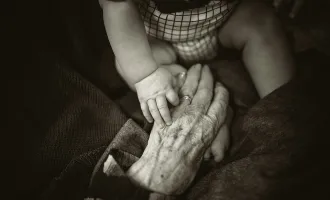PT in Acute Care
Many of my columns have focused on orthopedic issues in physical therapy: the lowdown on running shoes, scary postural deviations and how to strengthen your neck.
This time, I’d like to highlight the cool things that happen in the hospital. Ever noticed folks in green scrubs walking with patients on UCSF wards? Those are physical therapists, and their role is a bit more comprehensive than mobilizing patients. Here is what you should know about physical therapists who work in acute care:
The Gestalt
Physical therapists evaluate and treat movement dysfunction at its core. I think of therapists in acute care as performing three functions:
1) Evaluate the patient’s current movement: what can they do in bed, out of bed, and around the community.
2) Recommend the next destination following discharge.
3) Treat the patient’s limitations to get them to their next destination
Evaluation includes a range of motion, strength, vitals, neurological screen, functional testing in bed and out of bed, and gait analysis. We give patients homework (yes, to exercise!), educate them about post-operative precautions, and look for abnormalities to report to the rest of the team—more on that later.
The Details
Physical therapy treatment alone can seem simple. I coach patients how to stand up efficiently and where to place their hands when they use an assistive device, and I use my own hands to facilitate their gait. The more complex aspect is communicating with the team about patients’ needs—where I think they should go next, when they should be turned for pressure management, how often they should ambulate—and advocating for a referral to another specialty. To this day, my claim to fame is catching a brachial plexus injury. All the clinicians I’ve worked with have their own stories about spotting ulcers, compartment syndrome, an MI or stroke in action, aortic aneurysm, fracture—the list goes on. It’s impossible for a single practitioner to monitor a patient every moment, and therapists add to the team’s knowledge of a patient.
What You Should Know
If you are a medical student, very soon you will be referring your inpatients to physical therapy. Know that we evaluate their movement, screen for medical complications (you can count on us to test reflexes, cranial nerves and sensation, check wounds and incision sites, and give our patient a really good look over), fit them for assistive devices and do everything in our power to get them mobilized when indicated. Prevent ICU acquired weakness and order a PT consult for patients in the ICU. Research shows early mobilization decreases length of stay. Lastly, look for our notes and answer our calls. We enthusiastically offer more information about your patient.
If you are a pharmacy student, we will come to you with questions and also some answers you may not have thought to request. We spend up to an hour with a patient and have an intimate sense of side effects that occur with ambulation, which you’ll want to know. I will want to know a drug’s peak effect, to time my intervention optimally.
If you are a nursing student, we will be chatting each time I see a patient you’re looking after. I’ll ask you if anything is up, and after my treatment, I’ll fill you in on how it goes. You and I will become very close, and we’ll both smile when our patient gets up for the first time and when a patient walks himself out of the hospital.
Assistive Devices 101
Everyone—and I mean everyone—should be able to perform a decent assistive device fit. So here are the basics:
1) Cane: Position the cane on the strong, unaffected side. The handle should reach the greater trochanter, and the elbow should be flexed 20 to 30 degrees. Advance the weaker leg and the cane at the same time.
2) Crutches: Position the tips on the floor at a 45-degree angle (not straight in front or directly to the side). Elbow should also flex 20 to 30 degrees. The handgrip should reach the top of the ulnar styloid with arms at the side, and two or three fingers should fit between the axilla and crutch pad. Weight should be borne on the hands and not through the armpit—or else I will catch a brachial plexus injury in you!
Keep Updated
Physical therapy is a diverse field, and you can personally learn more this weekend. Every year, third-year PT students engage in a research project. Each of us conducts a meta-analysis on a topic of our choice and presents our findings on March 7. Yours truly has examined the effect of supplemental training on dance aesthetics. Other topics range from exercise’s effect on bone-mineral density in breast cancer survivors, to meditation for low back brain, and pelvic floor muscle training for pelvic organ prolapse—so interesting!
The presentations begin at 10 a.m. in HSW 300-303 and run until 3:50 p.m. Click 2015 Spring Symposium, Evidence to Clinical Practice at: ptrehab.ucsf.edu/education/continuing-education for more information.


